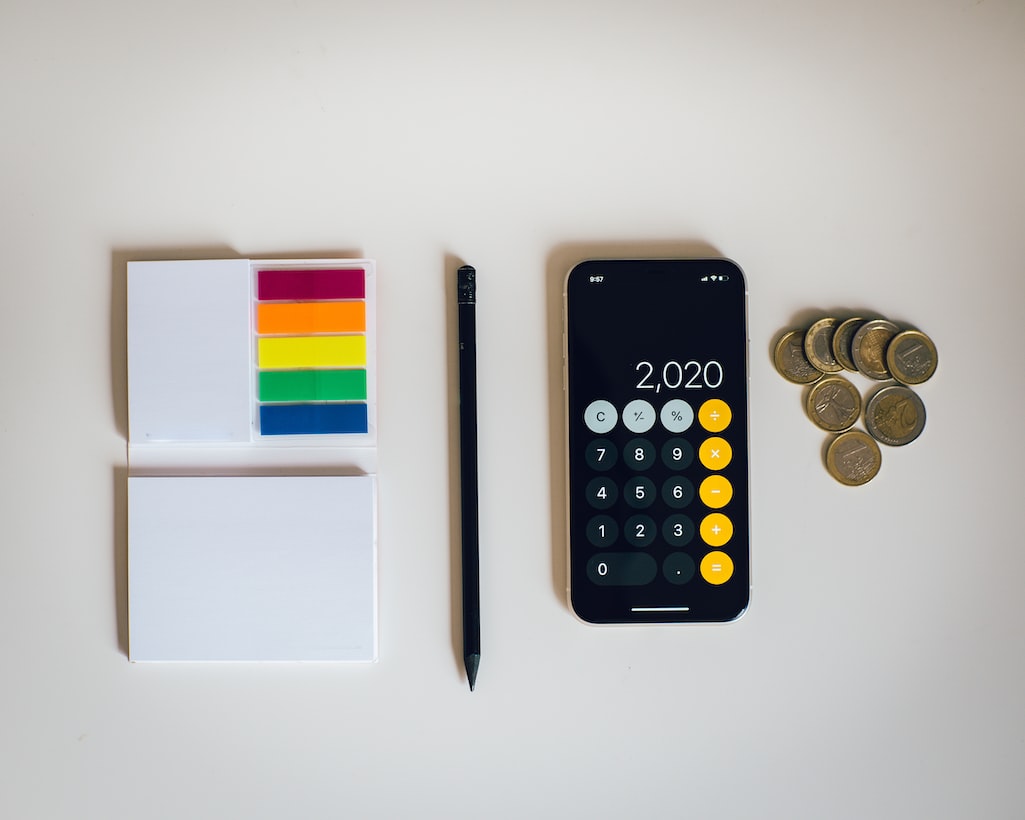Personal Loan Application Process
Key Takeaways
- Familiarize yourself with the personal loan application process to understand the steps, requirements, and potential outcomes, including loan rejection
- Many lenders offer online application portals for convenience and faster processing, although rates may vary compared to in-person applications
- In-person applications may take longer but can result in better terms, especially with existing creditor relationships
- Approval timelines vary depending on the application method, with funds typically disbursed within a week, either to a bank account or by check

The personal loan application process can be daunting if you aren’t sure what to do. While each lender may have their own requirements or procedures, it is good to know the basics of the personal loan application process.
Let’s go over the ways you can apply for a personal loan, the various steps and requirements, as well as why a loan might be rejected.

Online application
Conveniently, many lenders allow you to apply for a personal loan online as more creditors digitalize. On a lender’s website, you can find a dedicated portal for loan applications.
Online applications usually come with faster approval speeds and disbursement of funds. However, their rates can be worse when compared to in-person applications with creditors you have built a good relationship with already.
- Create an account
Some lenders might require you to register on their site before you can continue the application process. This necessitates creating a set of login credentials and giving them your basic information.
- Fill out the online application form
This form will require you to input various personal information. Information that you should have on hand includes:
- Name
- Address
- Date of birth (if you’re applying by yourself, you must be at least 18 years old)
- Your Social Security number (SSN)
- Your employment and income details
- Contact information
- Purpose of loan
- Co-signer information (if you have a co-signer)
- Collateral information (if this is a secured loan)
- Submit essential documents
Lenders might ask you to attach documents for verification. The usual documentation process will require you to submit the following:
- Proof of identity: At least two forms of government-issued ID, such as a passport and a driver’s license
- Proof of income: May be pay stubs, tax returns, your W-2 or 1099, and bank statements
- Proof of employment: Overlaps with proof of income requirements. You will need to give the lender employer contact information if you are not self-employed
- Proof of address: Utility bill, rental agreements, voter registration card, property tax receipts, or bank statements
- Consent to a credit check
Most personal loans require a credit check regardless of whether you are offering assets as collateral. You will need to consent to the credit check so that the lender can look into your credit score and history.
When you apply for a loan, the lender makes a hard inquiry, which can hurt your credit score temporarily. Your credit score conveys your creditworthiness (how suitable you are to lend money to), which is a major factor in whether a lender will lend you money.
- Review and submit your application
It’s recommended to carefully review your information for veracity prior to officially submitting your application online.
- Verification and evaluation
After you have completed the application and submitted it, the lender will look over all your information and take the necessary steps to evaluate your application. If this is a loan that is secured by collateral, the lender will also evaluate your collateral assets.
The lender may accept or reject your application. They may also ask you for additional information before making the final decision.
- Loan approval
If you make it to this step, congratulations! It means your lender has sent you a loan offer.
To finalize your loan, you will still need to sign a binding loan agreement. This can also be done online by electronically signing the loan agreement and confirming that you accept the terms and conditions.
Looking to find a personal loan online? Here are our top lenders.
In-person application
The procedure of an in-person application can take longer than an online one. However, it may result in better terms and rates for you if you are applying in person with a creditor you have an existing relationship with, such as your bank.
Being able to meet your loan officer in person can also be an advantage, and in-person applications are more suitable for those who dislike the idea of entering personally identifiable information online.
Here are the typical steps for making a personal loan application in person.
- Visit the lender’s physical location
This can be your lender’s office, such as your bank’s local branch. This might require you to make an appointment in advance, perhaps by reaching out to a staff member you are already acquainted with or by calling ahead.
- Consult with your loan officer
A staff member will be assigned to guide you through the loan application process. They will ask you various questions, and you will have the chance to ask them individualized questions and concerns as well. You may also need to consent to a credit check.
- Submit documentation
Make sure you have the necessary documents with you when you apply in person. This can include:
- Proof of identity
- Proof of employment and income
- Bank statements and pay stubs
- W-2s and 1099s
- Eligibility check
The lender will verify all of your information and assess your eligibility. They will also have to determine the specific terms of your loan, such as your designated loan amount, interest rate, and tenure.
- Loan offer and approval
If you are approved, the lender will provide you with a loan offer. If you agree to the terms, you will need to put your signature on the loan agreement before it officially becomes binding.
Make sure that you take the time to review all of the terms and conditions listed on the loan agreement. There may be unexpected fees, charges, and penalties that are important for you to familiarize yourself with.
- Disbursement of funds
After an in-person loan agreement has been signed, you may be able to get your funds on that same day or after several days depending on your creditor. The money will be deposited in your bank account, allowing you to use your personal loan funds for a variety of purposes.

Documentation
When you apply for a personal loan, lenders may require you to provide various documents, such as:
Proof of identity: This needs to be government-issued, and you may need to provide at least two different kinds.
Proof of employment: You might need to give the lender your employer’s contact information and details. You should be ready to provide bank statements, pay statements, and/or tax returns. If you are self-employed, you can submit your 1099.
Proof of income: Proof of income can be pay stubs, tax returns, and other relevant income information.
Existing debt information: If you have outstanding debt on your account, you might need to provide details of this debt to your lender.

Verification
After you apply for a personal loan, the lender will verify the documents and information you have provided.
You may be harshly punished if you sign a loan agreement and the lender finds out you provided false information afterward. Lying on a loan application is a crime that could even lead to jail time.
Loan approval
How long the online approval process takes depends on your lender of choice. Some lenders may be able to process your application, approve you, and disburse your loan funds all on the same business day.
If you apply in person, it can take longer for your loan application to be approved.
If your application is approved, the lender will send you a loan agreement, as well as numerous documents containing the terms and conditions of your loan.
Loan disbursement
Most lenders will be able to disburse your loan amount into your bank account within one business week. If you require near-immediate funds on the same day as you apply, it’s important to find a reputable lender who is known to disburse funds on the same day as a loan application.
You may also receive your loan funds in the form of a check, which you will then have to cash.
Loan rejection reasons
When a personal loan application gets rejected, there could be numerous reasons. Here are some recurrent reasons lenders reject loan applications.
Bad credit score or history: If you have a credit score below 670, the lender might believe you to be too unreliable when it comes to repaying your loan. In addition, having a history of defaulting on loans or missing payments can also deter lenders from accepting your application.
High debt-to-income ratio: Lenders may reject your application if you already have a substantial amount of debt in relation to your income. Even if you make plenty of money from your employment, a debt-to-income (DTI) ratio above 43% is likely to get you rejected.
Inaccurate application: Whether you made a mistake while filling out your application form or falsified information, a lender can reject your application if they find discrepancies or inaccurate details.
Unsuitable collateral assets: For secured personal loans, you will need to provide essential information on the assets you are putting up as collateral. If the lender finds the valuation of your assets or its type unsuitable, they can reject your application.
Age requirements not met: If you are not 18 years old, you cannot get a personal loan by yourself.
Legal requirements not met: Some lenders only give loans to those who have residency, citizenship, or other statuses.
An excessive number of loan applications: Lenders might be wary of lending money to someone who appears to be applying for a loan from many different lenders in a short amount of time, which hurts their credit score.
Unstable employment or income: Lenders are generally more willing to lend money to someone who has a steady income source. If you are unemployed, self-employed, or have a low income, it may be harder to get approved for a large personal loan amount.
Pre-approved offers
Getting pre-qualified or pre-approved for a loan is different from a formal loan offer. When you shop for loans online, some lenders let you check to see if you can be pre-approved.
For the pre-approval process, you will need to make a pre-approval application. Lenders might make a soft inquiry into your credit score that doesn’t affect the credit score. They will assess your creditworthiness and financial situation, such as your employment status, monetary obligations, assets, and liabilities.
Being given a pre-approved offer means that the lender is tentatively accepting that they will lend money to you. In a pre-approval letter, there will be details on your interest rate, repayment term, and more. However, the terms, conditions, and acceptance can be changed at any time, and a pre-qualification is not a guarantee that you will be able to obtain the loan.
Benefits of a pre-approval
- You get to see an estimate of what a lender’s terms will be if you officially apply
- Pre-approval can help you save time, especially if you get declined quickly
- Doesn’t hurt your credit–unlike a loan application, a pre-approval application makes a soft inquiry, which will not affect your credit score

Cosigners and guarantors
What is a personal loan co-signer
A co-signer is someone other than the borrower who agrees to take on responsibility for a personal loan. The reason you might want to convince a co-signer (e.g. a friend, family member, or a third party) to co-sign your loan agreement is so that you can increase your creditworthiness. Co-signers are legally obligated to repay the loan if the primary borrower defaults on it or misses payments.
Guarantor v.s. co-signer difference
Both terms are often used interchangeably, but there is a slight legal difference. A guarantor is only approached by the lender as a last resort, whereas the co-signer immediately shares responsibility from the moment the loan agreement is signed. If the primary borrower misses a monthly payment, the co-signer’s credit score can also be affected right away.
Loan top-ups
A personal loan top-up allows you to borrow more money from a lender who has already lent you money, and you haven’t repaid it fully yet.
A loan top-up can save you precious time because you don’t need to go through the entire loan search and application process again. However, the lender will still assess your eligibility based on factors such as whether you have been making regular, on-time payments on the existing loan.
If you successfully acquire a loan top-up, you can sign the revised loan agreement, which may have altered interest rates and terms. You will be responsible for paying back the new, combined loan amount.
Edited by:
Bryan Huynh
•
Product Tester & Writer



































































































